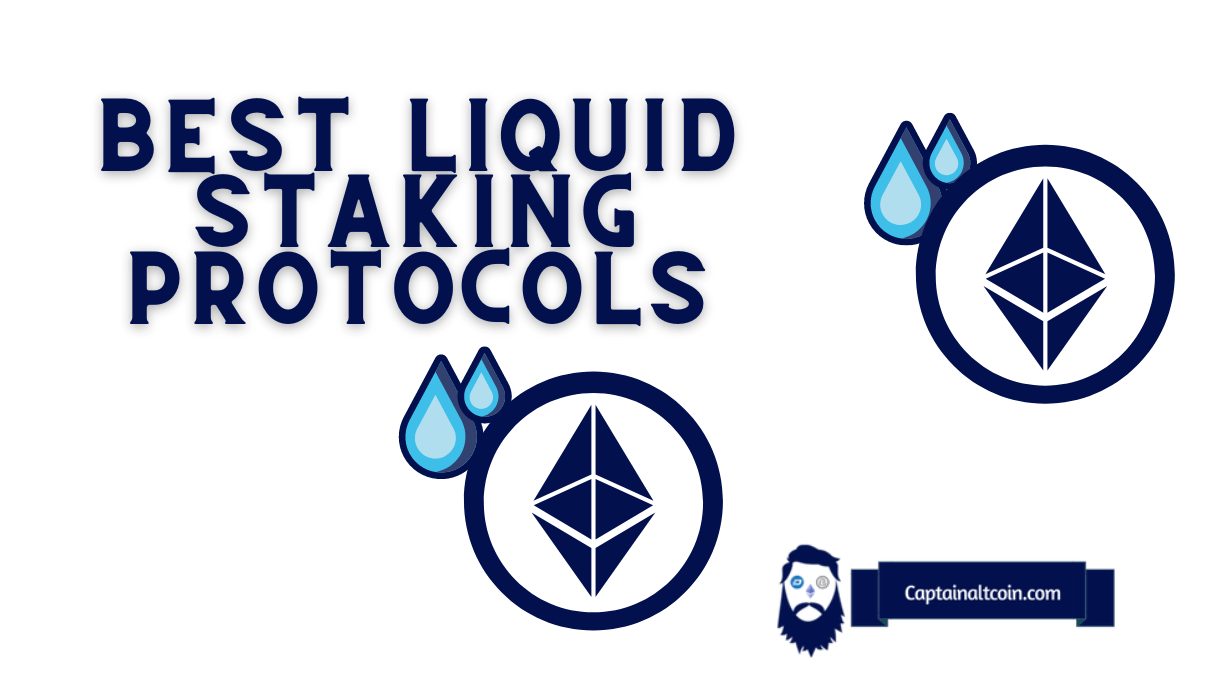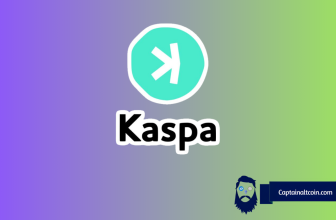
Staking has become one of the most popular ways for Ethereum holders to generate yield from their coins. However, directly staking ETH requires locking up funds for long periods of time, dealing with technical setup and maintenance requirements. This is where liquid staking platforms come in – they allow users to stake ETH and receive returns without compromising on liquidity or control of assets.
This article provides a comprehensive overview of some of the leading liquid staking platforms available today for Ethereum holders. We analyze and compare aspects like staking rewards, minimum deposit amounts, withdrawal times and penalties, security features and other key considerations.
ETH liquid staking has grown into a $15bn+ market, poised for significant shifts with the upcoming Shanghai upgrade. Dive into an in-depth analysis of the liquid staking landscape and explore 11 robust protocols.
| Liquid Protocol | Description |
|---|---|
| 🚀 Rocket Pool | A decentralized Ethereum Proof of Stake (PoS) service, making staking ETH 2.0 accessible by reducing financial and hardware requirements. It offers tokenized liquid staking with rETH and allows users to stake ETH and run a node. Known for its security, but requires technical expertise and penalizes for node downtime. |
| 💰 Frax Finance | Enables Ethereum staking with rewards in sfrxETH, redeemable for frxETH. Employs a dual token model for price stability and uses Algorithmic Market Operations (AMO). Notable for its high staking APR and upcoming Frax V3 upgrade. |
| 🧩 Fold Finance (Manifold Finance) | Provides DeFi middleware solutions, including MEV optimization. Introducing mevETH, an omnichain token for high staking yield via MEV opportunities. |
| 🌐 Lido Finance | Offers liquid staking for multiple cryptocurrencies including ETH, with no minimum staking amount. Uses derivative tokens for liquidity and can be integrated with hardware wallets for enhanced security. Holds a significant market share in ETH staking. |
| 🛡️ Stakewise | Aims at institutions for secure staking and DeFi participation. Offers AML compliant products with audited smart contracts. Features include tokenized deposits and rewards, and early withdrawal of derivative tokens for higher DeFi yields. |
| 🌟 Stader Labs | Has $120m in TVL staked across multiple chains. Known for its upcoming ETHx launch and the ability to run a node with just 4 ETH. |
| 🔗 Ankr Staking | Focuses on simplicity and user experience with one-click node deployment. Offers cross-chain support for various assets and maintains a stable market share. |
| 🔄 Unagii | Features auto-compounding for maximized returns and is planning to expand its product offering. Notable for its steady market share growth. |
| 🛒 Nimbus Platform | Offers various staking pools with different risk-return profiles based on its native tokens. Notable for its integrated marketplace and stable market share. |
| ⚙️ Stafi Protocol | Specializes in creating staking derivatives for PoS assets. Offers liquid staking tokens (rTokens) for accessing DeFi applications without unbonding. Plans to expand to other PoS chains for improved cross-chain liquidity. |
What you'll learn 👉
1. Rocket Pool
In conclusion, Rocket Pool is a decentralized Ethereum Proof of Stake (PoS) infrastructure service that aims to make staking ETH 2.0 more accessible to a larger public by reducing the financial and hardware requirements for staking the cryptocurrency.
It caters to two main user groups: those that wish to participate in tokenized liquid staking using rETH and those that wish to stake ETH and run a node. Rocket Pool is a fully non-custodial, trustless, and permissionless staking protocol that has a good reputation in terms of security.
However, its smart node network may require a higher level of technical expertise than other staking pools, and the beacon chain will penalize users who make a deposit but fail to keep their node online.
Key Features:
- Total ETH staked: 441k ETH
- Q1 stats:
- Inflow of 90k ETH staked on the protocol
- Market share increase from 4.9% to 5.3%
- $RPLUSD up by 137%
Upcoming Atlas Upgrade:
- Unstaking of ETH
- Gas optimization
- Higher node operator rewards
- 8ETH minipools
Solid Tokenomics:
- Users lock between 10%-150% of staked ETH in $RPL as collateral (protocol insurance)
2. Frax Finance
Frax Finance Liquid Staking allows users to stake their Ethereum and earn staking rewards in the form of sfrxETH, which is redeemable for frxETH at a 1:1 ratio.sfrxETH is the staked version of frxETH, and staking yield is distributed to sfrxETH holders.
Frax ETH Minter (frxETHMinter) enables the exchange of ETH for frxETH and spinning up new validator nodes when possible, and minting new frxETH equivalent to the amount of ETH sent.
Frax Finance Liquid Staking employs a dual token model that aims to maintain price stability, with the FXS governance token earning seigniorage revenue.
Frax Finance Liquid Staking uses Algorithmic Market Operations (AMO) to ensure price stability and viability.
Key Features:
- Total ETH staked: 128k ETH
- Q1 stats:
- Inflow of 82k ETH staked on the protocol (+175%)
- Market share increase from 0.7% to 1.6%
- Fees generated: $1.73m
- FXSUSD up by 122%
Highest Staking APR:
- Dual token model with frxETH and sfrxETH
Upcoming Catalysts:
- Frax V3: focused on safety, USD peg, on-chain governance, and more
3. Fold Finance (Manifold Finance)
Manifold Finance:
- Offers DeFi middleware solutions involving MEV optimization and block building for users & validators
Upcoming Liquid Staking Protocol:
- mevETH: an omnichain token utilizing LayerZero tech
- High staking yield via MEV opportunities
4. Lido Finance
Currently, Lido Finance provides liquid staking for five cryptocurrencies: Kusama (KSM), Polygon (MATIC), Solana (SOL), and Ethereum (ETH) (DOT).
Small investors can access the network since users can stake any number of tokens.
Using its derivative tokens, Lido offers liquidity to stakers (stETH, stSOL and bLUNA).
Since assets are staked directly on the network, it is impossible for users to unstake their money at any time.
To further increase the security of crypto-assets and the staking process, Lido can be coupled with hardware wallets like Ledger.
Due to Lido’s involvement in 16.17% of all ETH staked on the Ethereum Network, it enjoys a first-mover advantage in the market.
Here is a quick comparison of Lido vs Rocketpool.
Key Features:
- Total ETH staked: 5.95m ETH
- Q1 stats:
- Inflow of 1.09m ETH staked on the protocol (+22.5%)
- Market share decrease from 74% to 72.3%
- Fees generated: $117m
- LDOUSD up by 152%
5. Stakewise
Stakewise enables institutions to securely stake, take part in DeFi, and earn yield.
AML compliant product with audited smart contract deployment that restricts interaction to funds that have undergone KYC.
With a market-tested liquid staking protocol that has genuine customer demand and traction, StakeWise provides a best-in-class Eth2 liquid staking experience.
StakeWise has cultivated enduring bonds with numerous DeFi initiatives and has a long history of contributing to the sustainability of the Ethereum ecosystem.
Blockdaemon offers a 100% money-back guarantee, which means that any money lost to Blockdaemon will be compensated.
Blockdaemon and StakeWise are collaborating to give businesses wishing to enter the DeFi market access they have never had before.
Users can withdraw derivative tokens early and earn more DeFi yields thanks to StakeWise liquid staking.
Customers’ Eth deposits and rewards are both tokenized by StakeWise, which creates sEth2 (staking Eth) and rEth2 (reward Eth) respectively. In the event that a user wants a higher yield, they can use their tokens on affiliated DeFi services.
Key Features:
- Total ETH staked: 94k ETH
- Q1 stats:
- Inflow of 10k ETH staked on the protocol (+12%)
- Market share decrease from 1.28% to 1.18%
- Fees generated: $1.68m
- SWISEUSD up by 128%
V3 Launch:
- Vaults as a key component
- Modular staking: users decide which vaults to deposit ETH into based on yield, stability, etc.
6. Stader Labs
Key Features:
- $120m in TVL staked across multiple chains, including Polygon, Fantom & BNB Chain
- Upcoming ETHx launch
- Ability to run a node with just 4 ETH (and 0.4ETH worth of $SD)
7. Ankr Staking
Key Features:
- Total ETH staked: 61k ETH
- Q1 stats:
- Inflow of 7k ETH staked on the protocol (+13%)
- Market share stable at 0.74%
- Fees generated: $1.02m
- ANKRUSD up by 108%
Platform Advantages:
- Focus on simplicity and user experience
- One-click deployment of nodes
- Cross-chain support: Staking for various assets, including BNB, ATOM, and DOT
8. Unagii
Key Features:
- Total ETH staked: 50k ETH
- Q1 stats:
- Inflow of 6k ETH staked on the protocol (+14%)
- Market share increase from 0.5% to 0.6%
- Fees generated: $900k
- UIGIUSD up by 94%
Auto-Compounding:
- Automated staking yield reinvestment
- Users can maximize their returns through compounding interest
Upcoming Developments:
- Expanded product offering and support for more assets
9. Nimbus Platform
Key Features:
- Total ETH staked: 42k ETH
- Q1 stats:
- Inflow of 5k ETH staked on the protocol (+13.5%)
- Market share stable at 0.51%
- Fees generated: $750k
- NBUUSD up by 87%
Integrated Marketplace:
- Offers various staking pools with different risk and return profiles
- Pools are based on the platform’s native tokens: NBU, GNBU, and LpNBU
10. Stafi Protocol
Key Features:
- Total ETH staked: 36k ETH
- Q1 stats:
- Inflow of 4k ETH staked on the protocol (+12.5%)
- Market share increase from 0.38% to 0.44%
- Fees generated: $640k
- FISUSD up by 115%
Staking Derivatives:
- Focus on creating staking derivatives for various PoS assets
- Liquid staking tokens (rTokens) enable users to access DeFi applications without unbonding
Upcoming Integrations:
- Expansion to other PoS chains and improved cross-chain liquidity
Read also:
- Rocketpool vs Lido – Is staking on Rocket Pool better than Lido?
- How To Stake ETH With Lido?
- Stakewise Review – How Good Is This Crypto Staking Platform?
The liquid staking ecosystem is evolving rapidly, with protocols offering various features and benefits. Users should consider their risk appetite and staking goals when choosing a platform. As the ETH staking landscape matures, expect more innovative solutions and optimizations in the space.








